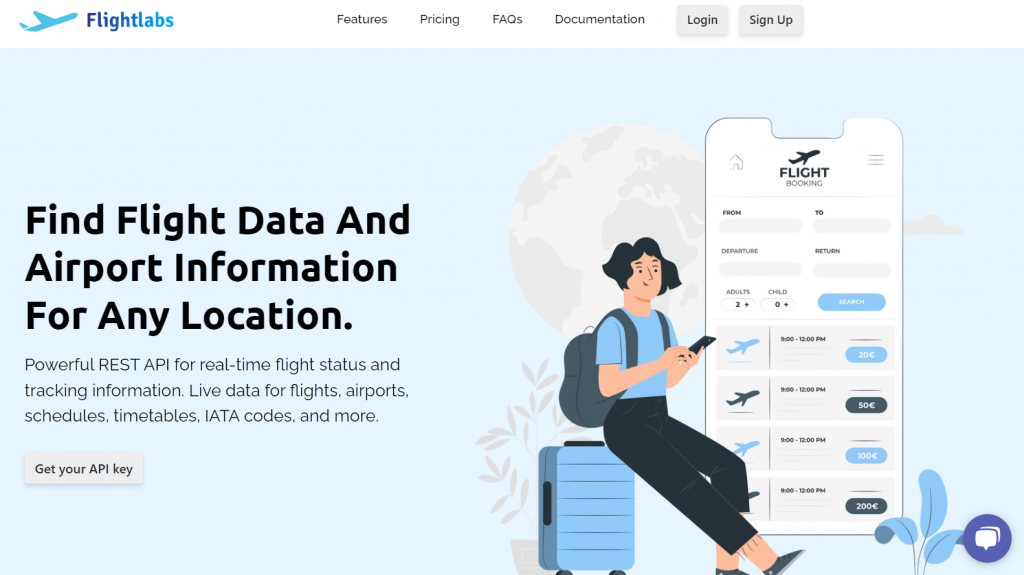API means “application programming interface”, as you probably know. This tech allows you to access data in a system; without APIs, many applications would not be possible. They are essential to the development of many applications. They have a set of commands and protocols that allows two systems to communicate with each other. If you are developing a Travel Application, you can improve your UX with an Airline Data API that will allow them to search for info like flights, and schedules without having to search in different places.

Make Your App Popular
There are some guidelines that are common to all applications, such as creating something that is simple and intuitive to use, has a unique selling point that makes it stand out, and, of course, motivates people to use it again.
You must be able to set yourself out from the competition in the case of travel apps because the market is becoming more crowded. Using an Airline Data API is one approach to achieving this.
Airline Data APIs
By choosing to use the API to build your travel app, you open your avenues to many more opportunities, such as travel booking, flight tracking, and flight search, rather than just building one or two of them. APIs give you much more functionality within a single roof. This is easier for you as well as for your users
Using API means automating all that set of tasks, without relying on people. In return, it vastly reduces cost, time, and effort. It is a quick approach to completing the task with minimal resources.
Flightlabs: The Finest Airline Data API
You should use Flightlabs as your provider of flight data APIs for a number of reasons. In the first place, the data is reliable and accurate. This API tracks all of the biggest airlines in the world, so you can be confident that you’re getting the most up-to-date information.

In addition to accuracy, Flightlabs provides a number of unique features that are unavailable from other suppliers. They provide powerful filtering options that make it simple to customize the data you get, ensuring that you only get the information that is essential for your business. They also provide historical flight data, which is excellent for forecasting and analytics.
It’s simple to integrate this API into any website or app, and new features are always being added to make it even simpler to use.
Flightlabs‘ “Airports” API Endpoint
For instance, if you enter the name of an airport into the API call, the API will return the following results:
{
"data": [
{
"GTM": "1",
"airportId": 7,
"codeIataAirport": "AAH",
"codeIataCity": "AAH",
"codeIcaoAirport": "EDKA",
"codeIso2Country": "DE",
"geonameId": "3207669",
"latitudeAirport": 50.75,
"longitudeAirport": 6.133333,
"nameAirport": "Aachen/Merzbruc",
"nameCountry": "Germany",
"phone": "",
"timezone": "Europe/Berlin"
},
[...]
]
}How To Use Flightlabs
- Create a Flightlabs account at https://www.goflightlabs.com/. Then select your desired endpoint or enter the IATA or ICAO code of airports or airlines.
- Use these codes and then call the API. You can get a unique API key on your account dashboard.
- Finally, press the “Run” button and you’re done! The API response will be displayed on your screen. You can also choose a programming language.
Want to learn more about this? Go check to Get The Most Out Of Your Airport Data With APIs

